Research Article
Volume 3 Issue 4 - 2019
Evaluation of Water Hyacinth (Eichhornia Crassipes) Compost for Its Nutrient Content at Adami Tulu Agricultural Research Center
Adami Tulu Agricultural Research Center, P.O. Box: 35, Ziway, Ethiopia
*Corresponding Author: Abay Challa Kuke, Adami Tulu Agricultural Research Center, P.O. Box: 35, Ziway, Ethiopia.
Received: May 10, 2019; Published: June 18, 2019
Abstract
Water hyacinth (Eichhornia crassipes) is a free floating aquatic weed that can cause a diversity of problems due to its fast spread and crowded growth. The composting of water hyacinth can reduce the chemical fertilizer application to the agricultural field and problems related to healthy aquatic system. The present study was carried out on pit and vermi composting of water hyacinth collected from Dugda district large scale irrigation canal in order to evaluate the quality of the compost. The experiment was set up with four treatments which were; water hyacinth + cattle manure + vermi worm, water hyacinth + cattle manure alone, cattle manure + wheat straw + forest soil + ash + green materials with water hyacinth and cattle manure + wheat straw + forest soil + ash+ green materials. Composts prepared combining cattle manure with water hyacinth using vermin worm have showed better nutrient content than others. Among composts, the highest percentage of total nitrogen (1.12%), organic carbon (12.63%), available Phosphorus (1591 ppm) and available Potassium (17, 314 ppm) were recorded in compost made up of mixture of cattle manure and water hyacinth using vermi worm. Compost made of cattle manure and water hyacinth alone has also showed better results next to water hyacinth using vermin composting. So, we recommend the users, to use treatment which comprises mixture of water hyacinth and cattle manure alone in areas where there is no access to use vermi worm.
Keywords: Compost; Water hyacinth; Nutrient
Back ground Justification
Water hyacinth (Eichhornia crassipes) is a free floating aquatic weed that grows in fresh water, but may be rooted in the mud, from where it draws all its nutrients directly. It has been recognized as the most damaging aquatic weed in Ethiopia since its first presence in 1965 (Rezene, 2005). Efforts to control the weed through chemical, physical and biological methods have all failed. However, there is a continued emphasis from some researchers that there is significant benefit to be obtained from seeing water hyacinth as a resource rather than a rogue plant (Anjanabha and Kumar, 2010). Water hyacinth would have a great potential if incorporated into agricultural practice (Gunnarsson and Petersen, 2007). The weed is considered as a valuable source of macronutrients such as phosphorus, nitrogen and potassium that are essential for plant nutrition (Sahu., et al. 2002, Prasad., et al. 2013). Hence there is need to shift to sustainable organic fertilizer. Compost making from water hyacinth, would be a better alternative to improve soil fertility. It can reduce chemical fertilizer load and expansion of water hyacinth.
Water hyacinth is increasingly being used as a nutrient supplier as composted material (Malik, 2007) and like other organic composts, it increases physical and biological nutrient storage capacity, water holding capacity, cation exchange capacity, micro aggregation in soils and can reduce the effect of over-fertilization by slow release of nutrients (Khan and Sarwar, 2002). Many researchers have also reported that, as it has positive effects on sustainability of soil nutrient resource and yield of agricultural produce. It has a high potential to supply nitrogen as it can store up to 3.2% in its dry mass and it generally has a carbon to nitrogen ratio (C/N) of around 8 to 15 (Khan and Sarwar, 2002; Gunnarsson and Peterson, 2007). Use of water hyacinth compost enhances soil productivity and yield of crop plant (Lata and Veenapani, 2013). It can increase Organic carbon and nitrogen content of soil (Chukwuka and Omotayo,2008) Application in soil largely results from its content of organic matter, plant nutrients, promoting plant growth and inhibiting root pathogens plant diseases (Balasubramanian., et al. 2013).
Due to the availability of water hyacinth in Lume district around Koka and in Dugda district irrigation canal in large quantities; it can be used as a material for production of organic fertilizer. Therefore, this project was designed to achieve the following objectives
Objectives
- to evaluate the quality of the compost made from water hyacinth
Materials and Methods
Study area
The study was conducted at on station in Adami Tulu Research Center, East Shoa Zone of Oromia Region. It is located at the distance of about 160 km away from the capital city of Addis Ababa to the south. It lies at a latitude of 7° 9’n and 38° 7’e longitude at an altitude of about 1650 meters above sea level. The rainfall is bimodal and unevenly distributed with average annual rainfall of 760 mm. The minor and main rainfall periods are from February to April and July to September, respectively. The temperature is nearly 30°c during dry season. The vegetation is characterized by scattered acacia wood land. Most of the region is topographically flat having sandy loam and andosol soil types.
The study was conducted at on station in Adami Tulu Research Center, East Shoa Zone of Oromia Region. It is located at the distance of about 160 km away from the capital city of Addis Ababa to the south. It lies at a latitude of 7° 9’n and 38° 7’e longitude at an altitude of about 1650 meters above sea level. The rainfall is bimodal and unevenly distributed with average annual rainfall of 760 mm. The minor and main rainfall periods are from February to April and July to September, respectively. The temperature is nearly 30°c during dry season. The vegetation is characterized by scattered acacia wood land. Most of the region is topographically flat having sandy loam and andosol soil types.
Compost making
Compost was prepared from Water hyacinth (50%) and cattle manure (50%) using vermi worms and pit method (conventional compost). Fresh water hyacinth before setting flower was harvested manually and chopped into small pieces of about 5-10 cm in length to increase the surface area for microbial action. The chopped water hyacinth was spread and sun dried for at least two days before being filled into the pits. A pit for composting of water hyacinth was prepared at on station with measurement of 2 m x 1 m x 1 m for length, width and height respectively to attain maturity according to the procedure described by Tumuhairwe., et al. (2009).
Compost was prepared from Water hyacinth (50%) and cattle manure (50%) using vermi worms and pit method (conventional compost). Fresh water hyacinth before setting flower was harvested manually and chopped into small pieces of about 5-10 cm in length to increase the surface area for microbial action. The chopped water hyacinth was spread and sun dried for at least two days before being filled into the pits. A pit for composting of water hyacinth was prepared at on station with measurement of 2 m x 1 m x 1 m for length, width and height respectively to attain maturity according to the procedure described by Tumuhairwe., et al. (2009).
The chopped water hyacinth pieces were weighed and put in to the composting pits to form a layer with cattle manure according to their proportion following standard procedure. Mixing of the compost was carried out every fifteen days to reduce the compaction and improve aeration of the composting materials which enhances further decomposition.
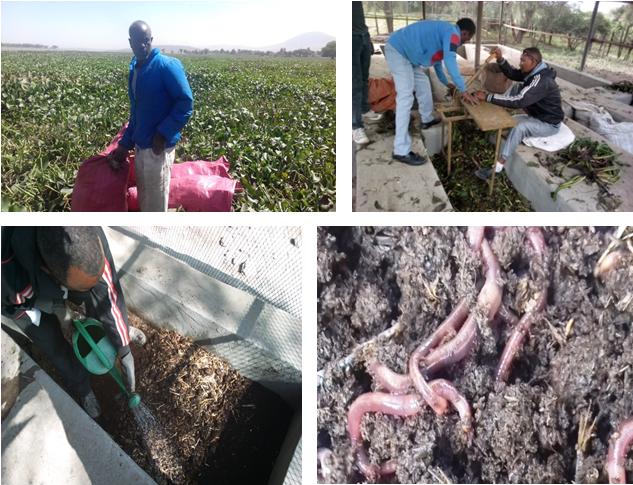
Picture 1: Manual harvesting of water hyacinth, copping with a chaff cutter, mixing and vermi worm (Eisenia fetida) used.
The experiment was set up with four treatments which were:
T1=water hyacinth + cattle manure +vermin worm
T2= water hyacinth + cattle manure alone
T3= cattle manure + wheat straw + forest soil + ash + green materials with water hyacinth
T4= cattle manure + wheat straw + forest soil + ash+ green materials (conventional without water hyacinth). Green materials are usually green and wet or recently growing materials that are rich in nitrogen or protein. They are also the items that tend to heat a compost pile up because they help the microorganisms in the pile grow and multiply quickly. In our experiment, annual weeds that haven't set seed were used as green materials.
T1=water hyacinth + cattle manure +vermin worm
T2= water hyacinth + cattle manure alone
T3= cattle manure + wheat straw + forest soil + ash + green materials with water hyacinth
T4= cattle manure + wheat straw + forest soil + ash+ green materials (conventional without water hyacinth). Green materials are usually green and wet or recently growing materials that are rich in nitrogen or protein. They are also the items that tend to heat a compost pile up because they help the microorganisms in the pile grow and multiply quickly. In our experiment, annual weeds that haven't set seed were used as green materials.
Result and Discussion
Quality of water hyacinth compost
Compost samples were collected after three month of maturity times in order to analysis major crop nutrient. Samples from each treatment were picked from four different points and mixed to make a homogenized of about 500 g and taken to laboratory. The colors of the compost sample were differed. Those were black, dark brown and light for treatment number 1, 2 and 4 respectively. The quality of compost was analyzed for compost made using vermi and conventionally method (Table 1).
| Parameters | Treatments | |||
| T1 | T2 | T3 | T4 | |
| pH 1:2.5 | 7.60 | 7.20 | 7.90 | 7.50 |
| EC (ds/m) | 1.65 | 1.05 | 7.16 | 2.25 |
| T.N (%) | 1.12 | 0.74 | 0.79 | 0.62 |
| O.C (%) | 12.63 | 8.37 | 9.42 | 7.01 |
| O.M (%) | 21.77 | 14.43 | 16.23 | 12.09 |
| Av.K (%) | 1.73 | 0.78 | 0.55 | 0.75 |
| Av.P (%) | 0.16 | 0.16 | 0.10 | 0.10 |
| P2O5 | 3630.11 | 3643.85 | 2311.07 | 2370.15 |
| C/N | 11.00 | 11.00 | 12.00 | 11.00 |
Table 1: Analysis of major crop nutrient of composts.
pH and EC
The pH of all analyzed compost was found between 7.2 and 7.9.
The lower pH was recorded in treatment two (T2) while higher was recorded in treatment three (T3).The analysis of all pH is found in preferred range of well matured compost. According to Rynk (1992), the recommended range of pH at the end of composting time is found between 6.0 up to 7.8.Compost with pH above 7.8 would be limited to acidic soils or to crops with high pH requirement.
The value of EC for analyzed compost was found between 1.05 ds/m up to 7.16 ds/m. The lowest was recorded in treatment two (T2), while the highest was recorded in treatment three (T3). Except treatment three (T3), all have almost unlimited use for agricultural purpose which is less than 2.5 mmhos/cm (Rynk R. 1992). Compost with a soluble salt level above 2.5 mmhos/cm would have to be diluted with other material before it could be used for certain plants.
Total nitrogen (%)
Results of chemical analysis showed that, total nitrogen content of water hyacinth compost was higher in using vermi as compared with that of conventional made compost (Table 1 and Figure 2). The highest (1.12%) total nitrogen was recorded in treatment one (T1) and the lowest (0.62%) was recorded in treatment four (T4). It was compost made using vermin compost which has showed better total nitrogen. This result agrees with previous work by Chauhan and Josi (2010), who reported an increase of total nitrogen in vermicomposting of water hyacinth (Eichhornia crassipes).
Organic carbon (%)
Like total nitrogen the highest (12.63%) organic carbon was also recorded in treatment one (T1) and the lowest (7.01%) was recorded in treatment four (T4). The enhanced mineralization of compost materials due to vermin composting may be the reason for higher organic carbon value in treatment one (T1) than the others (Khwairakpam M., and R. Bhargava., 2009). The C: N of analyzed compost found between 11and 12. The result analysis is similar with finding of (Khan and Sarwar, 2002; Gunnarsson and Peterson, 2007), who reported that carbon to nitrogen ratio (C/N) of water hyacinth compost is found between 8 and 15.
Total phosphorous
Higher phosphorous was observed in compost made up of water hyacinth and cattle manure using vermi and without vermin. Compost made using conventional method with mixture of cattle manure + wheat straw + forest soil + ash + green materials with and without water hyacinth have showed lower phosphorus content (Table 1). The study by Muthukumaravel., et al. (1992) indicated that vermin composted vegetable wastes and toxic weed like water hyacinth contain more phosphorous
Total potassium (K %)
The potassium (K) content of compost is greater in treatment one (T1) than others (Table1 and Figure 5). Compare to others treatment potassium content of compost made using vermin has showed highest value (1.7%) while T3 showed lowest value (0.55%).
Conclusion and Recommendation
This report shows that water hyacinth has remarkable nutritive properties that can be used for the production of nutrient enriched compost. On the other hand the use of water hyacinth as compost materials has an advantage to maintain healthy aquatic system as well as a substitute for crop residue to make compost. The result of analyze have shown different nutrient content among the treatments. Composts prepared combining cattle manure with water hyacinth using vermin have showed better nutrient content than others. Except EC for treatment three (T3), the result of the analysis for pH and EC of compost prepped under each treatment found within normal range for agricultural purpose. Among composts, the highest percentage of TN, OC, avaP and avaK were recorded in treatment one (T1) which was a compost made up of mixture of cattle manure and water hyacinth using vermin. We have seen also that, the compost made of cattle manure and water hyacinth alone has showed better results next to treatment one (T1). Therefore, from the result we can conclude that it possible to make nutrient enriched compost by using cattle manure and water hyacinth alone with and without the use of vermin. So we recommend the users, to use treatment two (T2) in areas where there is no resource to use vermin. Thus, on the other hand help users to save crop residue for cattle feeds rather than use it for compost preparation.
Acknowledgement
The authors greatly acknowledge Oromia Agricultural research institute (OARI) for funding this study. Oromia water works design and supervision are highly Acknowledged in analyzing the compost samples collected. Technical assistants of the soil fertility research team are highly acknowledged for their support in in material preparation and frequent fellow up during the experimental period.
The authors greatly acknowledge Oromia Agricultural research institute (OARI) for funding this study. Oromia water works design and supervision are highly Acknowledged in analyzing the compost samples collected. Technical assistants of the soil fertility research team are highly acknowledged for their support in in material preparation and frequent fellow up during the experimental period.
References
- Anjanabha B and Kumar P. “Water hyacinth as a potential biofuel crop”. Electronic Journal of Environmental, Agriculture and Food Chemistry 9.1 (2010): 112-122.
- Balasubramanian D., et al.“Water hyacinth [Eichhornia crassipes (Mart.) Solms.] engineered soil nutrient availability in a low-land rain-fed rice farming system of north-east India”. Ecological Engineering 58 (2013): 3-12.
- Chauhan A and Joshi PC. “Composting of Some dangerous and Toxic weeds using Eisenia fetida”. Journal of American Science 6.3 (2010): 1-6.
- Gunnarsson CC and Petersen CM. “Water Hyacinths as a Resource in Agriculture and Energy Production: A Literature Review”. Waste Management27.1 (2007): 117-129.
- Khan S and Sarwar KS. “Effect of Water-Hyacinth Compost on Physical, Physico-Chemical Properties of Soil and on Rice Yield”. Journal of Agronomy 1.2 (2002): 64-65.
- Khwairakpam M and R Bhargava. “Vermitechnology for sewage sludge recycling”. Journal of Hazardous Materials161.2 (2009): 948-954.
- KS Chukwuka and OE Omotayo. “Effects of Tithonia Green Manure and Water Hyacinth Compost Application on Nutrient Depleted Soil in South-Western Nigeria”. International Journal of Soil Science 3.2 (2008): 69-74.
- Lata and Veenapani. “The impact of water hyacinth manure on growth attributes and yields in Coriandrum satvum”. Journal of Environmental Science5.3 (2013): 4-7.
- Malik A. “Environmental Challenge vis a vis Opportunity: The Case of Water Hyacinth”. Environment International 33.1 (2007): 122-138.
- Prasad R., et al.“Assessment of nutrients and stability parameters during composting of water hyacinth mixed with cattle manure and sawdust”. Research Journal of Chemical Sciences 3.4 (2013): 70-77.
- Rezene F. “Water hyacinth (Eichhorniacrassipes): A review of its weed status in Ethiopia”. Arem 6 (2005): 105-111.
- Rynk R. “On-Farm Composting Handbook”. NRAES Pub 54 (1992):
- Sahu AK., et al. “Efficacy of water hyacinth compost in nursery pond for larval rearing of Indian major carp, Labeo robitta”. Bioresource Technology 85 (2002): 309-311.
- Tumuhairwe JB., et al.“Comparison of four low technology composting methods for market crop wastes”. Waste Management 29.8 (2009): 2274-2281.
Citation:
Abay Challa Kuke and Kasahun Kitila Hunde. “Evaluation of Water Hyacinth (Eichhornia Crassipes) Compost for Its Nutrient Content at Adami Tulu Agricultural Research Center”. Innovative Techniques in Agriculture 3.4 (2019): 690-696.
Copyright: © 2019 Abay Challa Kuke and Kasahun Kitila Hunde. This is an open-access article distributed under the terms of the Creative Commons Attribution License, which permits unrestricted use, distribution, and reproduction in any medium, provided the original author and source are credited.





























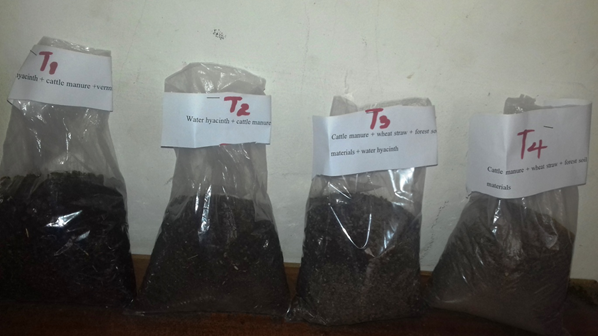
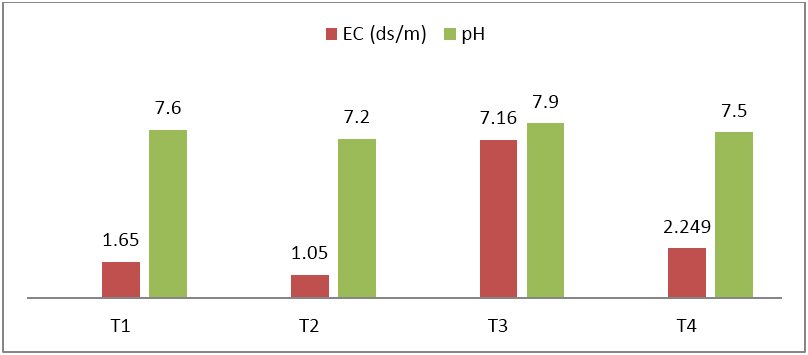
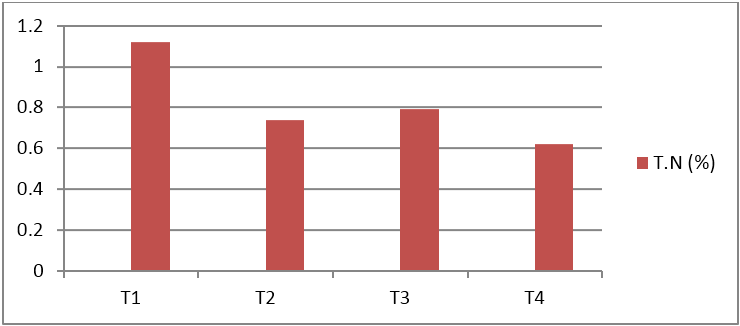
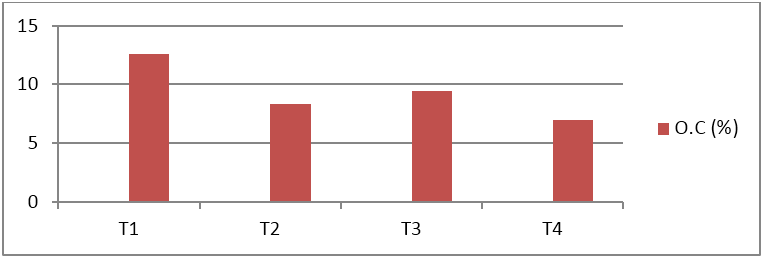

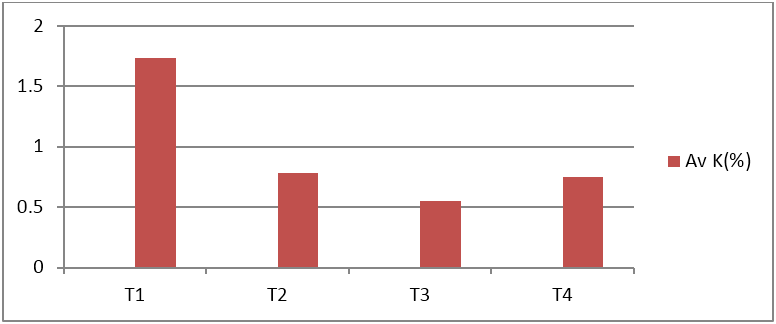
 Scientia Ricerca is licensed and content of this site is available under a Creative Commons Attribution 4.0 International License.
Scientia Ricerca is licensed and content of this site is available under a Creative Commons Attribution 4.0 International License.